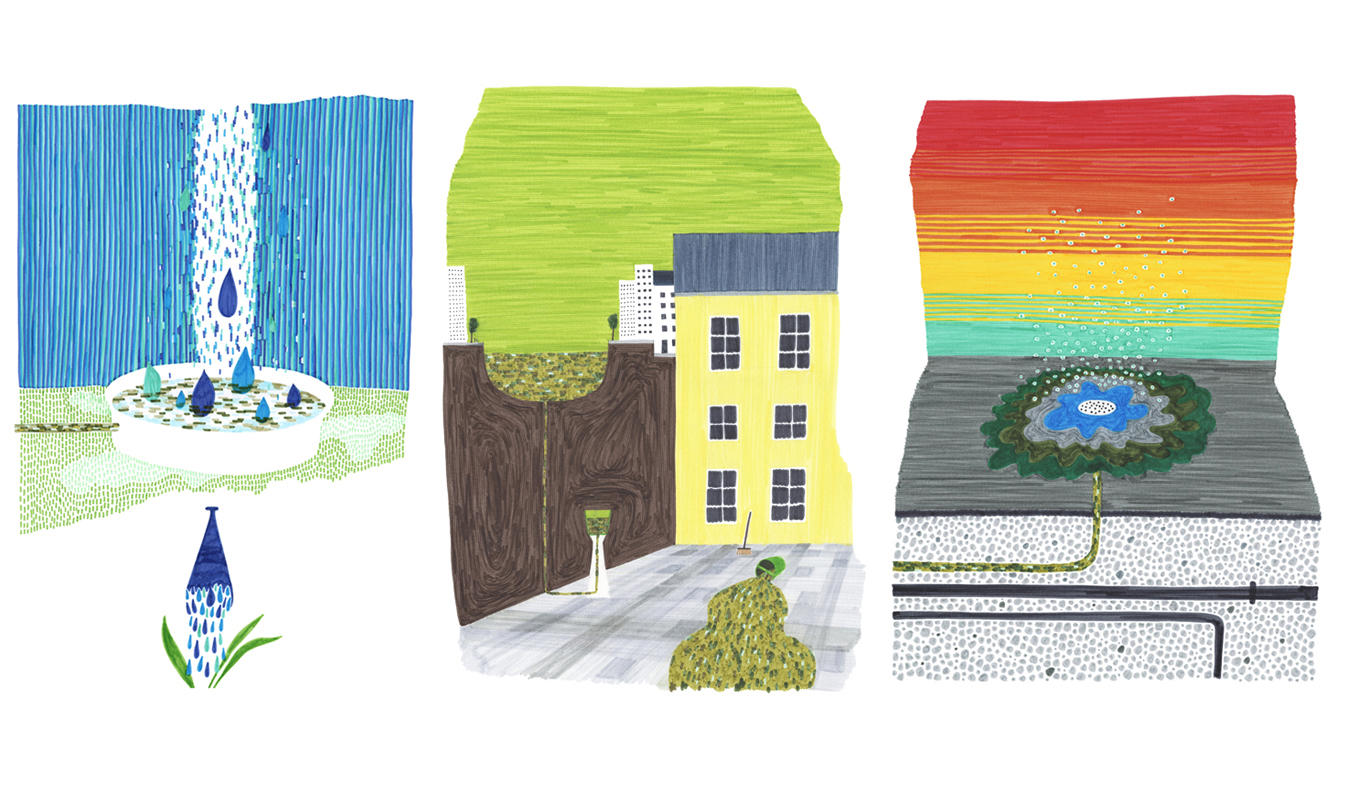
Systems to enhance the value of Paris's non-potable water network
In the mid-19th century, the City of Paris set up a non-drinking water network to water its green spaces and clean its roads. Threatened for a time with abandonment because it was outdated and under-used, this network now needs to imagine new contexts of use for this water, extracted from the Seine and the Ourcq canal. Topique-eau non potable gives shape to three uses for this water:
- a basin incorporating a phytodepuration system and chantepleures (submerged watering cans) for community gardens;
- a cleaning terminal for common areas of buildings;
- a refreshment outlet for public squares.
The filter basin and chantepleures.
This device has been designed to use non-drinking water in community gardens. It filters water using a phytorestoration (plant filtration) process developed by the Phytorestore company. Once filtered, the water can be conveyed to the plants by means of chantepleures. Chantepleure is the ancestor of the watering can. It is unique in that it is filled from underneath, a way of sketching out a gesture specific to the use of this water from the Seine. This object was redesigned for the occasion and produced in small series by rotational molding.
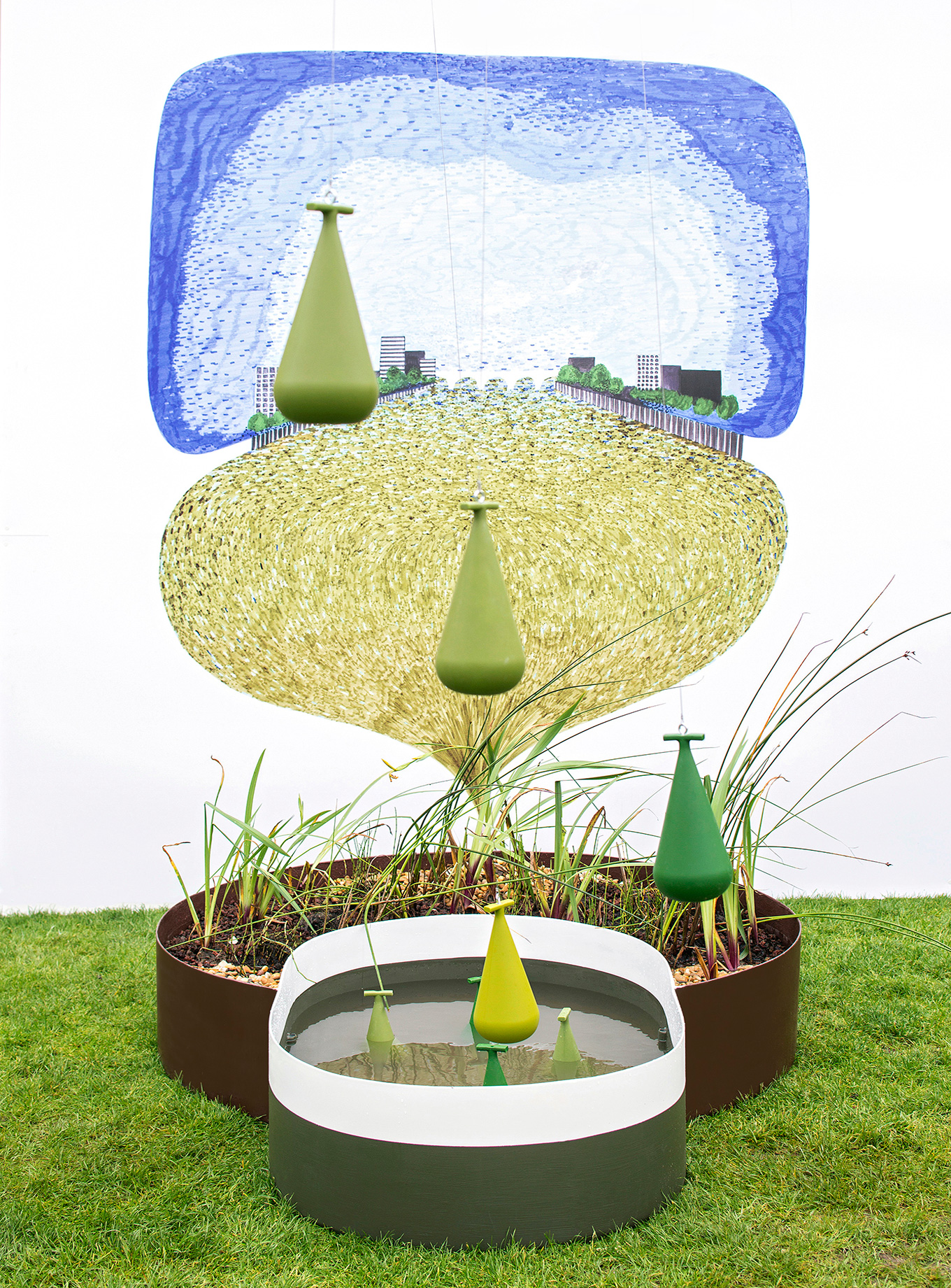
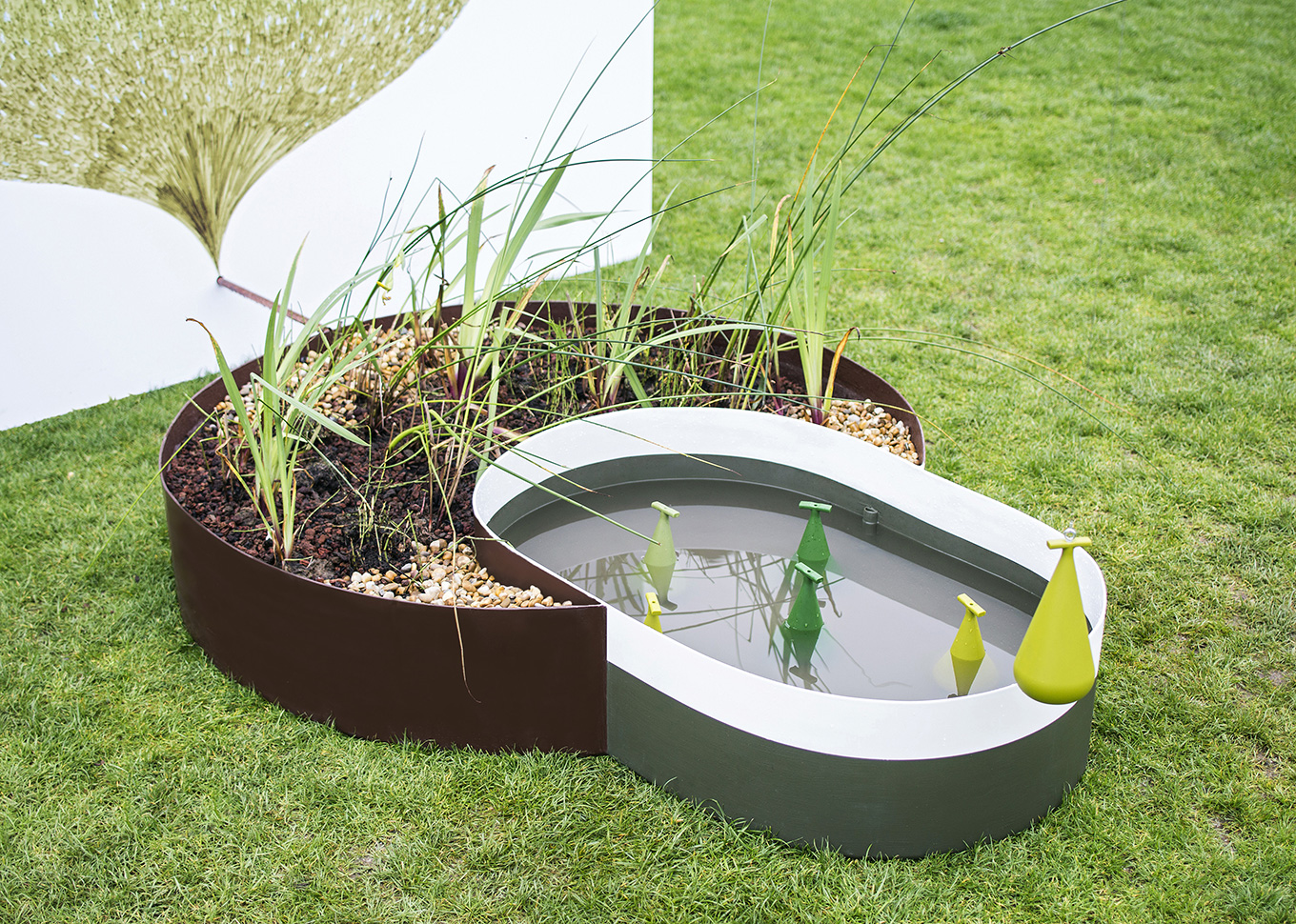
The cleaning terminal.
Today, any co-owner in Paris can request a connection to the non-drinking water network. However, there is no suitable system for distributing this water and identifying its specificity. The health risks associated with non-drinking water mean that it cannot be confused with drinking water. Designed for use in common areas of buildings, the cleaning station responds to this challenge by making an 8-liter bucket available to building occupants. The bucket is filled using a pedal located at the bottom of the unit.
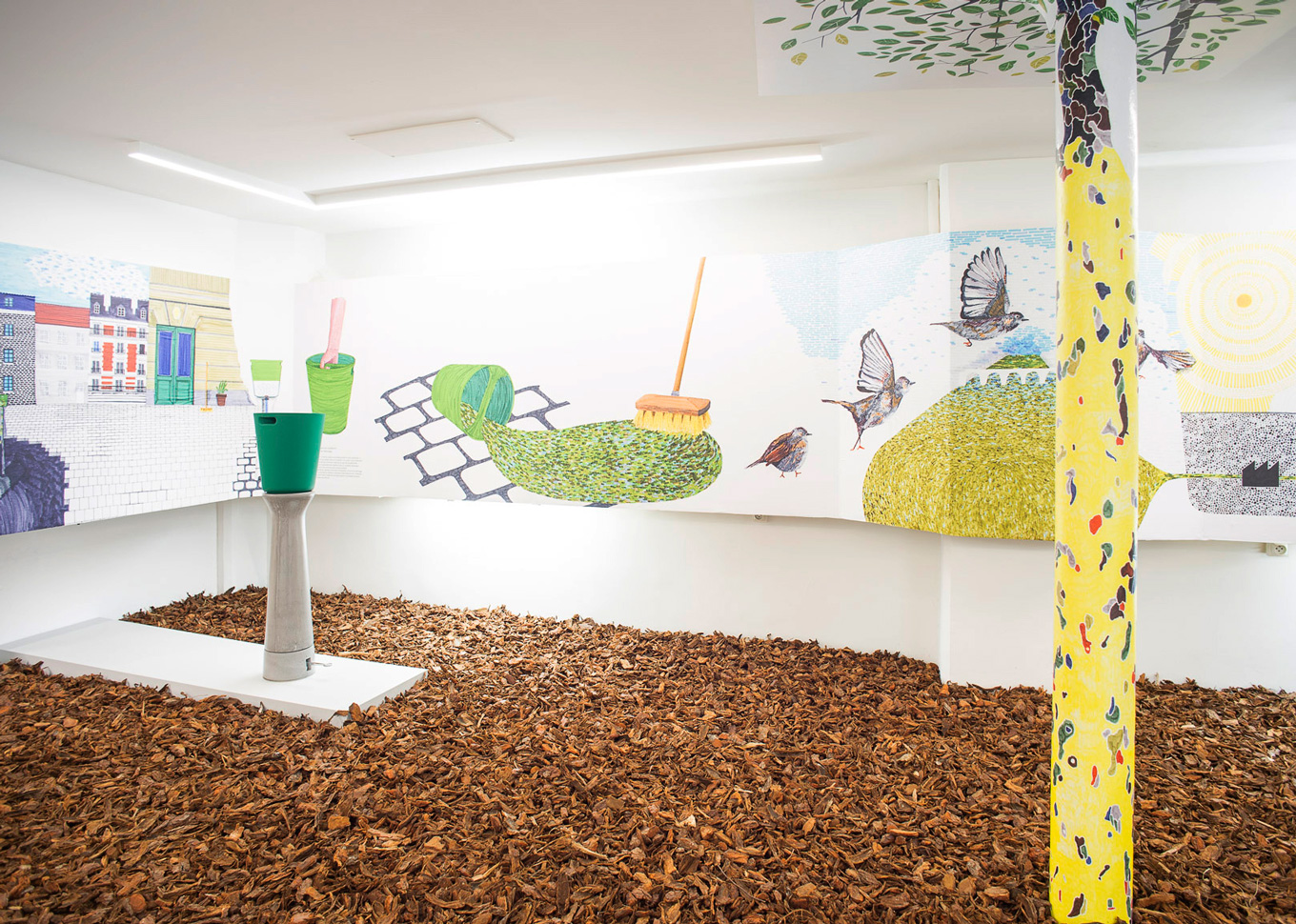
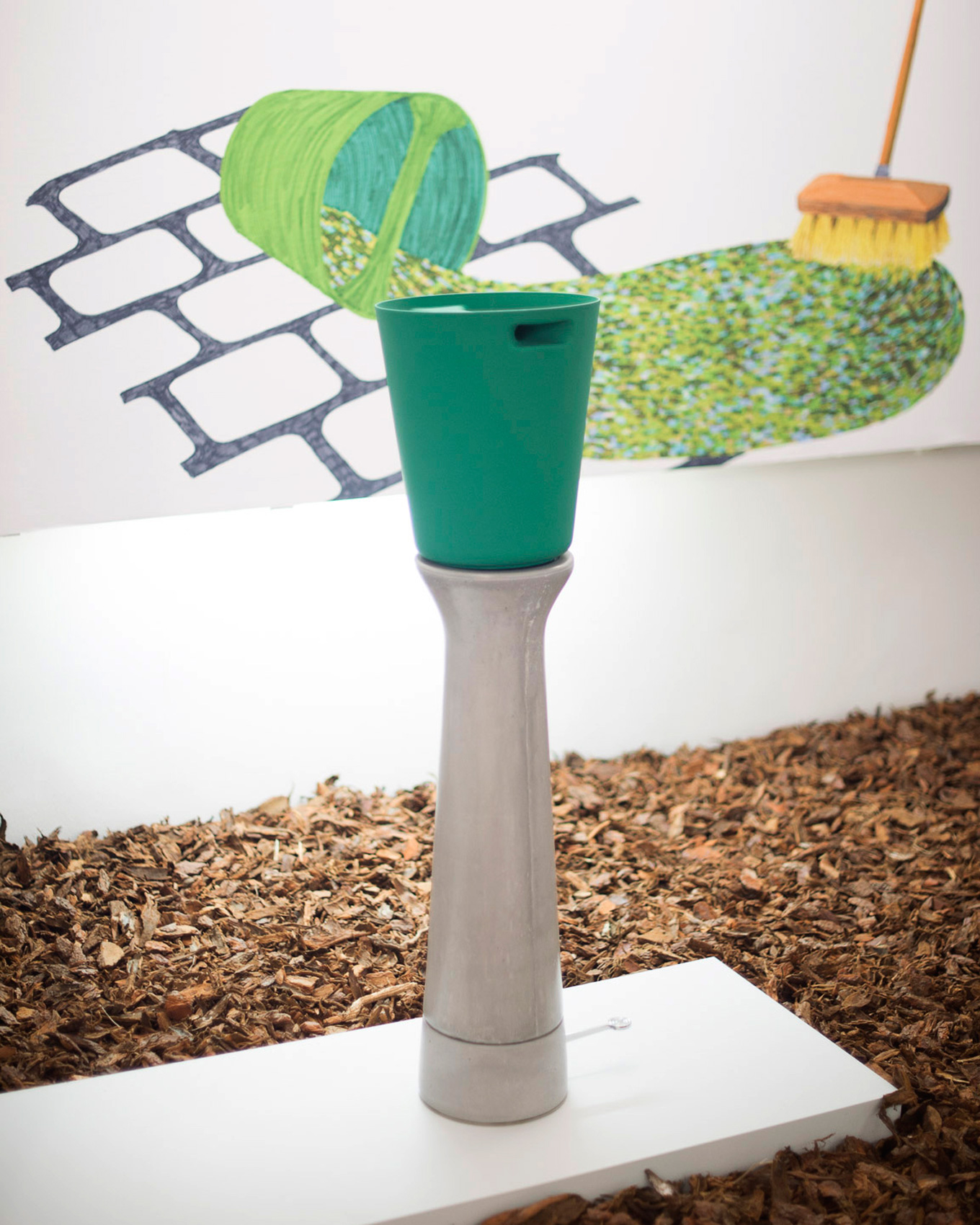
The refreshing outlet.
In the face of increasingly frequent heatwaves and the heat island phenomenon, non-potable water can be used to cool public spaces. Like the sprinkler or washing fountains on the street, the cooling fountain is connected to the non-potable water network and can be opened with a key by a city official.
The device operates by overflow. It is made of a porous material (quartz) that increases the contact surface between water and air. The water evaporates and refreshes the ambient air.
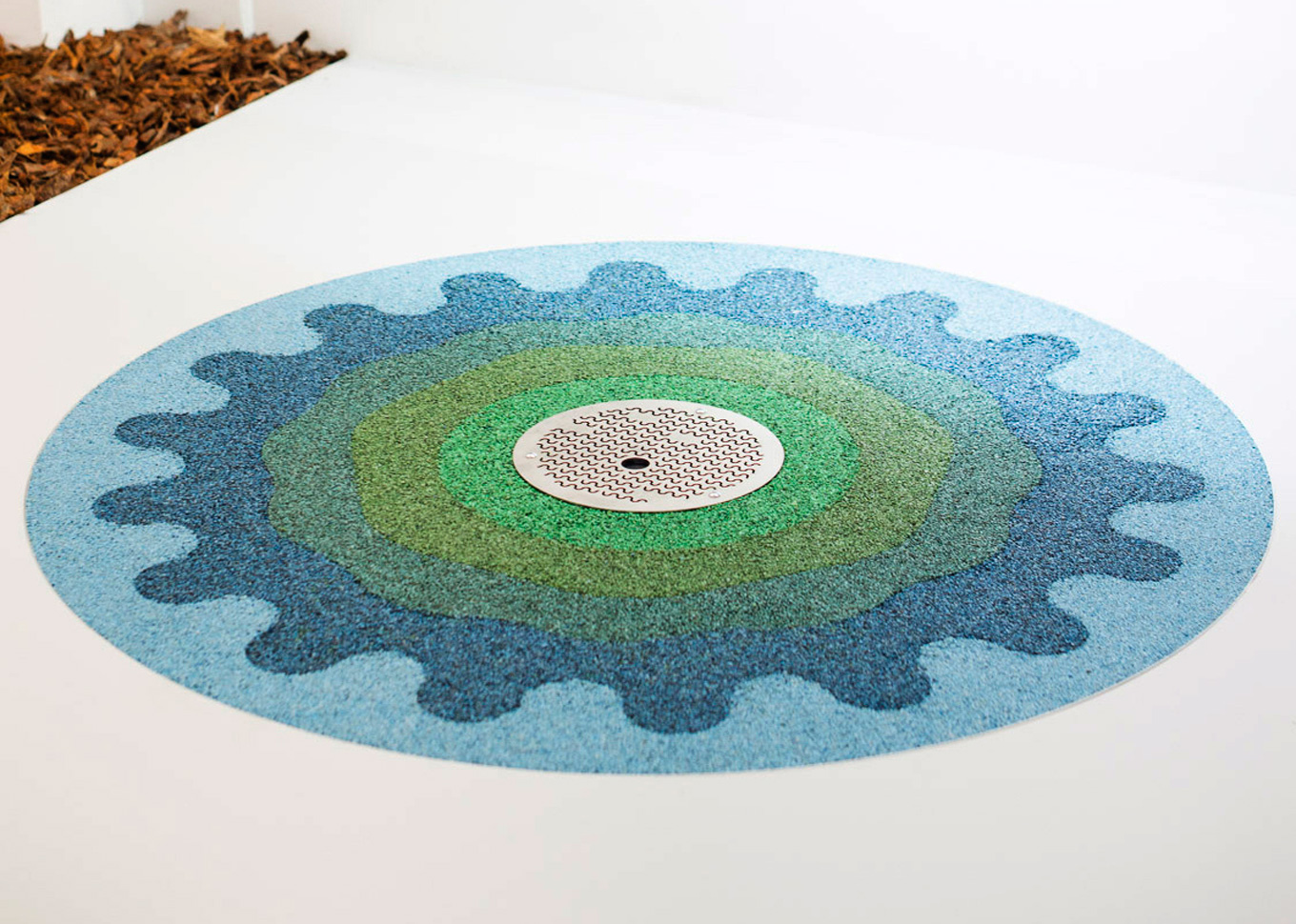
Team: Pauline Avrillon, Louise Raguet (intern), Camille Jégo (intern), Xavier Miclet, Rototech, Bernard Justin, Christophe Rovelli, Art Tech Composites, Materialise, Ezeka.
Phytodepuration study carried out by Phytorestore.
Prototype produced as part of the Audi Talents Awards program.
Dimensions and materials:
- pond: 2 x 1.50 x 0.30 m, composite materials;
- weir: 25 x 14 x 14 cm, flexible PVC;
- cleaning bollard: 98 x 27 x 27 cm, concrete, resin;
- refreshment outlet: 1.50 x 1.50 x 0.30 m,stainless steel, cast iron, concrete, methacrylate resin.
Photo credits: Pierre Lucet-Penato (photos Galerie Audi talents), Fabien Breuil (photos Tuileries).
Prototype produced as part of the Audi Talents Awards program.
Dimensions and materials:
- pond: 2 x 1.50 x 0.30 m, composite materials;
- weir: 25 x 14 x 14 cm, flexible PVC;
- cleaning bollard: 98 x 27 x 27 cm, concrete, resin;
- refreshment outlet: 1.50 x 1.50 x 0.30 m,stainless steel, cast iron, concrete, methacrylate resin.
Photo credits: Pierre Lucet-Penato (photos Galerie Audi talents), Fabien Breuil (photos Tuileries).